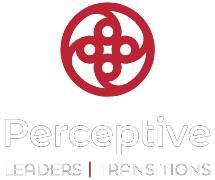
Challenge:
An established mid-market company had experienced an extended period of growth. The CEO had been with the company for several years and the senior leaders comprising its Executive Leadership Team (ELT) had each been with the organization for at least two years. Some had prior experience on an ELT in other companies while for others this was their first experience being part of a top team.
Perceptive was brought in by the CEO to work with the top team. We had previously worked with the CEO as his executive coach. He wanted to help his team take their collective leadership to a higher level. He also thought that a couple of the newest members of the team may benefit from executive coaching.
While he thought the team generally got along well together, he was also noticing increasing tension within the team especially when discussing enterprise-wide issues. This was concerning to the CEO, and it turned out, to the rest of the team.
Solution:
Team Development for the Executive Leadership Team (ELT)
How well the Executive Leadership Team functions as a team will largely determine the success of the company over time and will serve as the model that teams throughout the organization will follow.
Perceptive began by meeting with the CEO and with each member of the Executive Leadership Team to understand their perspectives on how the team was doing. Appreciative inquiry and deep listening are two of the skills that we bring to these conversations.
The conversations brought greater insight into the challenges that the team was facing. This was important for Perceptive to design a team development process that would best meet their needs and help them move forward as a high performing executive team.
Individual and Team Assessments
We utilized two self-assessment tools that would support each leader individually and the team collectively. Emergenetics was selected as the instrument to help the team gain insights into themselves, others on the team, and the team as collective. The Thomas-Kilmann Conflict Mode Indicator (TKI) was selected for its effectiveness in helping people, and teams, understand their preferred way of dealing with conflict and learn additional ways to master conflict.
The Five Dysfunctions of a Team, by Patrick Lencioni, would be utilized as an overarching framework for their work as a team. We utilized this Team Assessment to help the team assess for themselves how they were performing in a handful of areas that are essential for high performing top teams.
These assessments would provide the team with helpful information from which to begin a discussion in the offsite sessions that followed.
Custom Facilitated Team Development Sessions
Perceptive facilitated a series of full and half-day Team Development offsite sessions over the next several months that were designed to build one upon the other. This was the first time the team was coming together with an express focus on how they work together. Bringing in an outside facilitator skilled in working with senior teams allowed the CEO to lead the sessions while being a full participant on the team.
Each session contained areas of focus that ranged from exploring the role of the ELT and what makes a high performing top team to introducing the team to strategies they could use to actively strengthen how they worked together.
New Leader Integration Coaching in Parallel
We agreed with the CEO’s assessment that the two newest members of the team would benefit from working with an executive coach. We recommended a customized form of New Leader Integration Coaching for these two leaders. When meeting a second time with these two leaders they readily embraced the opportunity to work with an executive coach.
Results:
The team had many, what they called “ah ha” moments during these team development sessions. These moments centered around the role of an ELT, how they were operating as a team in ways that were holding them back, and some moments of truth in providing each other with constructive feedback and making personal commitments to the team.
When leadership teams make new discoveries about how they work together and learn new strategies for working together that are more effective they become a higher performing team that is aligned and cohesive for the organization.
Through the first team development session, the team came to understand and appreciate each other in new ways, and for some, begin to work through strained relationships. Improved interpersonal relationships had a positive effect on the team dynamic when the team came together. This was most apparent to the team when they were able to openly acknowledge that there were strongly held differences in opinion that unaddressed were holding them back.
They candidly discussed and ultimately agreed upon what would be important in their ability to collectively lead the organization through making difficult but necessary changes.
The two leaders who worked with an executive coach openly shared with the team their experiences being the newest members of the team. This provided everyone on the team with valuable insights. The team realized that some of the ways they were operating were limiting them and they were open to changing how they worked together.
Over the next several months, the team began spending more time together and keeping their ELT meeting agendas focused on what they agreed were the top priorities. They reported that they were better able to navigate the difficult conversations they needed to have and engage in conflict more directly and productively.
Over the next year, the team came together in a much more consistent and cohesive way. They were able to make critical and tough decisions together and move forward where they had felt stuck. The team felt very good about their ability to make progress on what they feared were intractable issues.
Note: To honor the confidentiality and protect the privacy of our clients we do not use names and have altered possibly identifying details in this Case Study.
About Perceptive Leaders LLC
Perceptive is a boutique leadership development and professional transitions consulting firm based in Denver, Colorado serving clients in the US and Canada, since 2005. We have worked with over 1,000 senior organizational leaders and accomplished career professionals to help them recognize opportunities for impactful and substantive change and how to realize that transformational change. For more than 15 years, Perceptive has been helping leaders and their teams transform their leadership. For more information, visit perceptiveleaders.com.
© Perceptive Leaders, 2022. All rights reserved.


